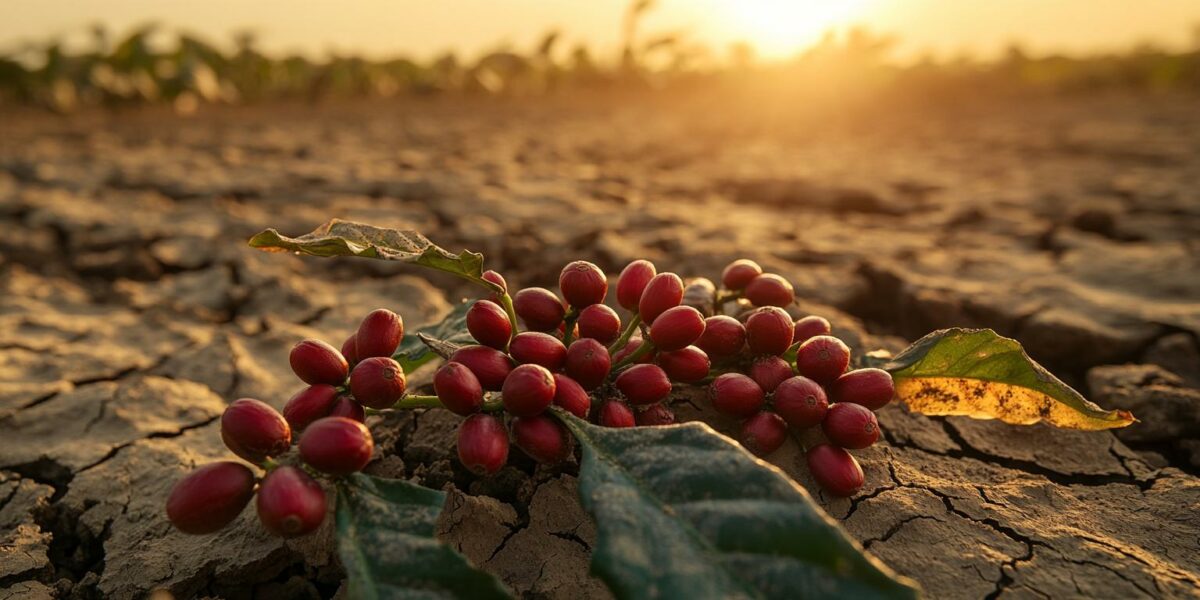THE SHRINKING COFFEE BELT
Millions around the globe start their day with a cup of coffee, but climate change is disrupting this cherished ritual. As temperatures rise and weather patterns become erratic, coffee-producing regions are feeling the strain, leading to increased costs and diminished flavor of coffee.
Southeast Asia, a key player in the coffee market, is particularly vulnerable. Vietnam and Indonesia, ranking second and fourth in global production, are grappling with the impacts of climate change. For instance, Vietnam produced 29.1 million 60kg bags of coffee in 2023, while Indonesia contributed 11.85 million.
The harsh reality is that coffee plants are highly sensitive to climatic changes. Increased heat and unpredictable rainfall can hamper growth, reduce yields, and lower bean quality. Pests like the coffee berry borer, thriving in warmer climates, exacerbate the problem, causing significant crop losses.
Forecasts are grim, with up to 50% of land suitable for coffee cultivation potentially becoming unsuitable by 2050. This transformation threatens to disrupt the entire coffee supply chain, putting both producers and consumers at risk.
SUPPLY AND DEMAND IMBALANCE
The regions within the Coffee Belt, located between 20 degrees north and 30 degrees south of the equator, are among the most threatened by climate change. This vulnerability poses a significant risk to the global coffee supply.
As climate conditions worsen, the supply from key regions like Southeast Asia is expected to shrink. Meanwhile, global demand for coffee continues to rise, driven by population growth and the beverage’s popularity for its health benefits.
Economic consequences are unavoidable. As coffee yields decline, prices will increase, shaking the entire market. The price of robusta coffee, for example, nearly doubled in early 2023 due to drought conditions in Vietnam.
While higher prices might temporarily benefit some producers, the long-term outlook is bleak. Persistent climate changes could make coffee farming unsustainable, forcing many small farmers to abandon their crops. Key factors include:
- Increased pest infestations
- Severe droughts
- Rising production costs
THE GLOBAL IMPACT
Climate change’s impact on coffee extends beyond Southeast Asia. Latin America and Africa, also major coffee-producing regions, face similar challenges, potentially leading to a drastic reduction in global supply.
The rise in coffee prices is unlikely to attract new farmers. Growing coffee under harsh conditions demands substantial investment in infrastructure like irrigation systems. Diversifying crops and practicing agroforestry are essential but require resources that small farmers often lack.
As supply dwindles and prices soar, consumers worldwide will feel the pinch. Sustainable practices can support production but come at an increasing cost. What was once a simple pleasure may turn into a costly indulgence with declining quality.
Technological advancements offer some hope. Breeding new coffee varieties that can withstand climate change could boost yields and reduce land competition. However, challenges remain. Small-scale farmers often lack information on the long-term performance of these hybrids.
BEYOND THE CUP
Climate change is transforming the coffee industry, with profound implications for both producers and consumers. Cooperation among governments, international organizations, and major coffee companies is essential to help farmers adapt.
Efforts must include investing in climate-resilient coffee varieties, providing financial and technical assistance to farmers, promoting intercropping under shade trees, and improving water resource management infrastructure.
Consumers also have a role to play. Supporting sustainable coffee brands and advocating for stronger climate policies are small but significant steps. Even those who don’t drink coffee can contribute by pressuring governments to adopt robust climate measures.
It’s time to rethink our morning routine and acknowledge the intricate web of factors that bring coffee to our tables. Climate change threatens more than just our caffeine fix – it endangers livelihoods, economies, and a cherished global tradition.



Valeria
This is alarming. Can we expect any policy changes to address this crisis soon?
faith_illusion
Who knew my morning brew had such a complex background? Maybe it’s time to switch to tea! 😂
Kennedy
It’s really sad to think about small farmers struggling so much. What can we do to help them?
Anthony
Great article, but are there any sustainable solutions already being implemented effectively?
CooperMonolith4
Does this mean we’ll have to start paying a lot more for our daily cup? 😟
henry_empyrean
Wow, I had no idea climate change was affecting my coffee! Thanks for the eye-opener.